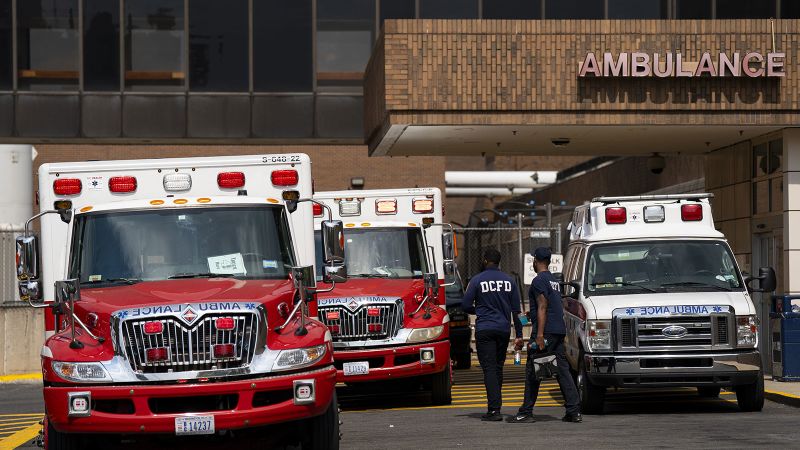In many states across the US, hospitals are experiencing a surge in heat-related emergencies as a heatwave blankets the country, according to data from the US Centers for Disease Control and Prevention. The CDC’s map shows that the regions most affected by heat illnesses are not necessarily the ones with the highest temperatures. While the South and Southwest are experiencing temperatures in the high 90s and beyond, states in the Northeast, Mid-Atlantic, Midwest, and Mountain West are seeing the highest numbers of heat-related ER visits, with temperatures ranging from 80-90 degrees.
Despite the lower temperatures in these regions, hospitals in more than two dozen states across six regions reported “extremely high” rates of heat-related emergencies on Saturday. The CDC defines “extremely high” as being in the top 5% of busiest days for heat-related illnesses over the last five years.
CDC health scientist Claudia Brown explains that the impact in these regions is higher due to the lack of infrastructure to deal with heat, such as air conditioning in homes. With climate change leading to more frequent and intense heat waves, the CDC has launched a heat risk tool that allows people to look up their ZIP code for a heat forecast and safety recommendations.
Dr. Cheyenne Falat from the University of Maryland in Baltimore, where a heat alert was declared over the weekend, has seen significant cases of heat stroke and other heat-related illnesses in recent weeks. She anticipates more cases in the coming days, especially among vulnerable populations like individuals with substance use disorders and older adults without air conditioning.
Dr. William Brady at the University of Virginia Health System in Charlottesville notes an increase in cases of heat exhaustion in patients who work or exercise outdoors. While they have not seen any cases of heat stroke yet, Brady emphasizes the importance of recognizing the signs of heat-related illnesses, especially for those with underlying health conditions.
As climate change continues to bring longer and hotter heat waves, Americans are facing a new challenge in dealing with extreme heat. Brady emphasizes the need for education and preparedness in managing the risks associated with high temperatures.



